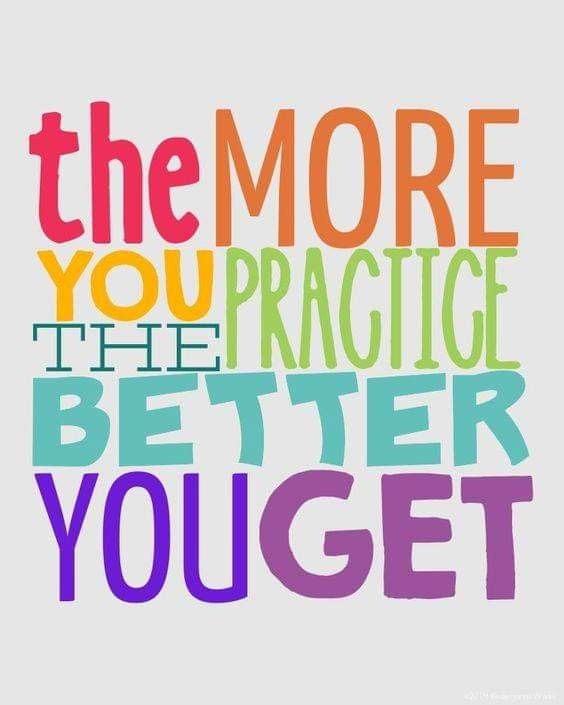
Everyone knows what we mean when we say “Practice makes perfect,” whether it’s whacking a golf ball over and over, repeating those dance steps until you can do them in your sleep, or playing the same riff on guitar till it’s smooth as silk. We know things will improve with enough repetition because we can see the results.
But how do you practice songwriting? You can practice piano or guitar to improve your playing, which is good, but it’s not songwriting. You can improve your singing with practice so you can hit notes with confidence, character, and emotion. And that’s really useful, but it’s not songwriting either.
You need to practice writing lyrics that move listeners. You need a workout that strengthens your melodies and provides more choices when writing. Where do you find the repeatable exercises that help you get better at those things?
Answer: By breaking it all down into manageable bits and focusing on areas where you’re having difficulty. So, let’s do it.
◆ PRACTICE WRITING LYRICS
1. Fire up your creativity
If you haven’t been writing lyrics lately or you just need a little boost, listen to a few successful songs you like to give your muse something to go on. It’s kind of like giving the scent to a bloodhound.
-> Practice it
- When you hear a lyric you like, make a list of the reasons why you like it.
How did the lyric create that reaction in you?
Write a verse or chorus using those ideas to create a similar reaction.
2. Replace a hit song lyric with one of your own.
Knowing how to write lyrics that will work well with a contemporary melody is an essential songwriting skill. If your songwriting roots are a few years in the past, this is a great way to give your lyric style a push in a modern direction.
-> Practice it
Choose one of the following songs and any recent successful song you like. Learn to sing a verse and chorus. Once the song feels comfortable replace the lyric with lines of your own. For a more challenging exercise , try replacing a conversational line with a conversational line of your own; if a line uses imagery, try to do the same. You can keep the same rhyme scheme, too.
“Someone You Loved” – Lewis Capaldi (Adult Contemporary)
“One of Them Girls” – Lee Brice
“Beautiful Day” – Joshua Radin (Singer-Songwriter)
“Know Your Worth” – Khalid (R&B)
“We Don’t Talk Anymore” – Charlie Puth (Pop/R&B)
“All Of Me” – John Legend (Adult Contemporary)
“Let Her Go” – Passenger (Folk)
“See You Again” – Wiz Khalifa feat. Charlie Puth (R&B/Rap)
“Down” – Jason Walker (Singer-songwriter)
“Stay With Me” – Sam Smith (R&B/Soul)
“What About Us“ – P!nk
You can look for more songs to explore on Spotify, Apple Music, or Amazon Prime Music in the genre you want to write in. Try to stick with successful songs rather than obscure album cuts.
Of course, there are some hits with less-than-stellar lyrics. But as someone who hasn’t written a hit song yet, you need to bring more to the table because you have more to prove. Study those songs you like and admire.
3. Describe an emotion using images, actions, and examples.
You can freshen up a generic lyric or situation and make it more compelling by painting a picture for the listener. For example, what is the singer doing that expresses his or her feelings? How does the emotion feel physically? What can you compare it to? Here’s what I mean…
Generic: I’d do anything for you.
Better: If you’re lost in the dark, I’ll light a thousand candles.
Generic: I’m leaving you.
Better: I’m gonna erase your name and forget your face.
Generic: I’m angry.
Better: There’s a fire burning me up inside.
To see some great lyrics that use images, actions, and examples, check out “Roar” by Katy Perry, “Brighter Than the Sun” by Colbie Caillat, “Slow Dancing In a Burning Room” by John Mayer, “Natural” by Imagine Dragons, and “Tequila” by Dan + Shay.
Find out more about using images, actions, and the physical senses in your songwriting.
-> Practice it
Practice expressing your feelings in, images, actions, and examples. Replace these generic phrases with one or more phrases that include images, comparisons, or examples. Try to make your phrases vivid, interesting, and engaging.
It’s a nice day.
Don’t take love for granted.
I had a bad dream.
Life can be funny that way.
I really miss you a lot.
Talk to me.
I like you.
Think about the important things in life.
I’m so excited.
Sometimes life is hard.
You should reach for your dream.
When you have a few phrases that you like, go ahead and use them to start a song. No one said a “practice song” couldn’t turn into a real song.
◆ PRACTICE SONG STRUCTURE & MELODY
4. Get to know song structure
Listen to a few hit songs and write down your sense of the structure. There are no hard and fast rules for identifying song structure because different people might hear the same song structures differently. So don’t drive yourself crazy wondering if you got it “right.”
Print out the lyrics and mark them up. What is the first line of each verse, the chorus, and the bridge? Is there a pre-chorus (a short section leading into the chorus)? Where do these sections repeat? Is the whole section repeated or just part of it? Here are some songs to get you started.
“Believer” – Imagine Dragons (Rock)
“Attention” – Charlie Puth (Pop/R&B)
“Don’t Start Now” – Dua Lipa (Dance/Pop)
“Got It In You” – BANNERS (Singer-Songwriter)
“Highway Don’t Care” – Tim McGraw
“The Bones” – Maren Morris
“Hold Back the River” – James Bay (Singer-Songwriter)
“Hello” – Adele (Adult Contemporary)
“Every Breath You Take” – The Police (Adult Contemporary)
“Stronger (What Doesn’t Kill You)” – Kelly Clarkson (Pop/Dance)
If you’d like a few structure hints, visit my Hit Song Guides where I analyze many of these songs.
-> Practice it
Choose one of the structures you hear in the song list above and write a melody in the same form (with or without a lyric). Try using the same number of lines in each section as the original hit did. You can use the chords of the hit song if you want to. This is just songwriting practice.
5. Study a hit song melody
To practice or perfect the writing skills of their favorite authors, writers will often copy whole pages from novels and short stories. The physical act of typing or writing out the words embeds the rhythm and feel of the language. You can do something similar with hit song melodies.
Listening to successful melodies and analyzing them (as I do in my Hit Song Guides) can help you get a feel for contemporary melodies. But by actually singing them, you reinforce a deeper kind of learning, one that will expand your creative choices as you write. New melody ideas are more likely to spontaneously occur to you if you have physically embedded the techniques .
-> Practice it
Learn to sing the melody of a hit song. (You can use one from the list above.) Keep time as you sing so you get the feel of the melodic rhythm. Practice it until it feels comfortable. If you play an instrument learn the chords and play along. If you don’t play an instrument, use a karaoke track.
6. Add excitement to your melody
Rewriting your melody is just as important as rewriting a lyric. If your song melodies feel a bit “blah” there are easy ways to freshen them up and add strength.The trick is to get familiar with the different techniques that are used and give yourself some choices.
Pick one of the hit songs in the lists above and listen closely to the vocal melody.
- Check for patterns of repetition in the melody: whole lines and parts of lines.
- Listen for lines with a lot of up and down movement.
- Notice smooth, long notes vs. ones that are choppy.
- Look for pauses that are longer than one beat. Where do they occur?
- Notice any melody phrase that catches your attention. How did it do that?
-> Practice it
Sing along with the recording. You can use the lyrics or just “la-la” your way through it, but be sure to stay focused on the way the notes move up or down, change pace, pause, or start in unexpected places. Get familiar with how it feels when you sing this melody.
Using the chords of the hit song or your own chord progression (or a karaoke track), rough out a verse and chorus melody of your own with some of these ideas in mind. It’s just for practice. If you end up with a melody you like, keep it. If you don’t like it, throw it out. You’ll write plenty of melodies as you do these exercises.
When you don’t feel like practicing

Of course there will be days when you don’t feel like practicing. We all have them. Remember, you don’t have to spend a lot of time on these exercises. Sometimes it’s enough just to find a couple of hit songs you like, check out the structure, notice what you like about the melody, or what the lyric is doing that catches your attention.
Keep in mind that a practice session can often end up being a productive writing session. The exercises are all geared toward listening and learning from successful songs, so don’t be surprised if your inspiration starts pumping out lyric and melody lines as a result. Just be sure you don’t use the melody or lyrics of the hits you’re listening to.
Make songwriting practice a regular part of your life. It will help you keep your creativity turned ON and the music flowing!
